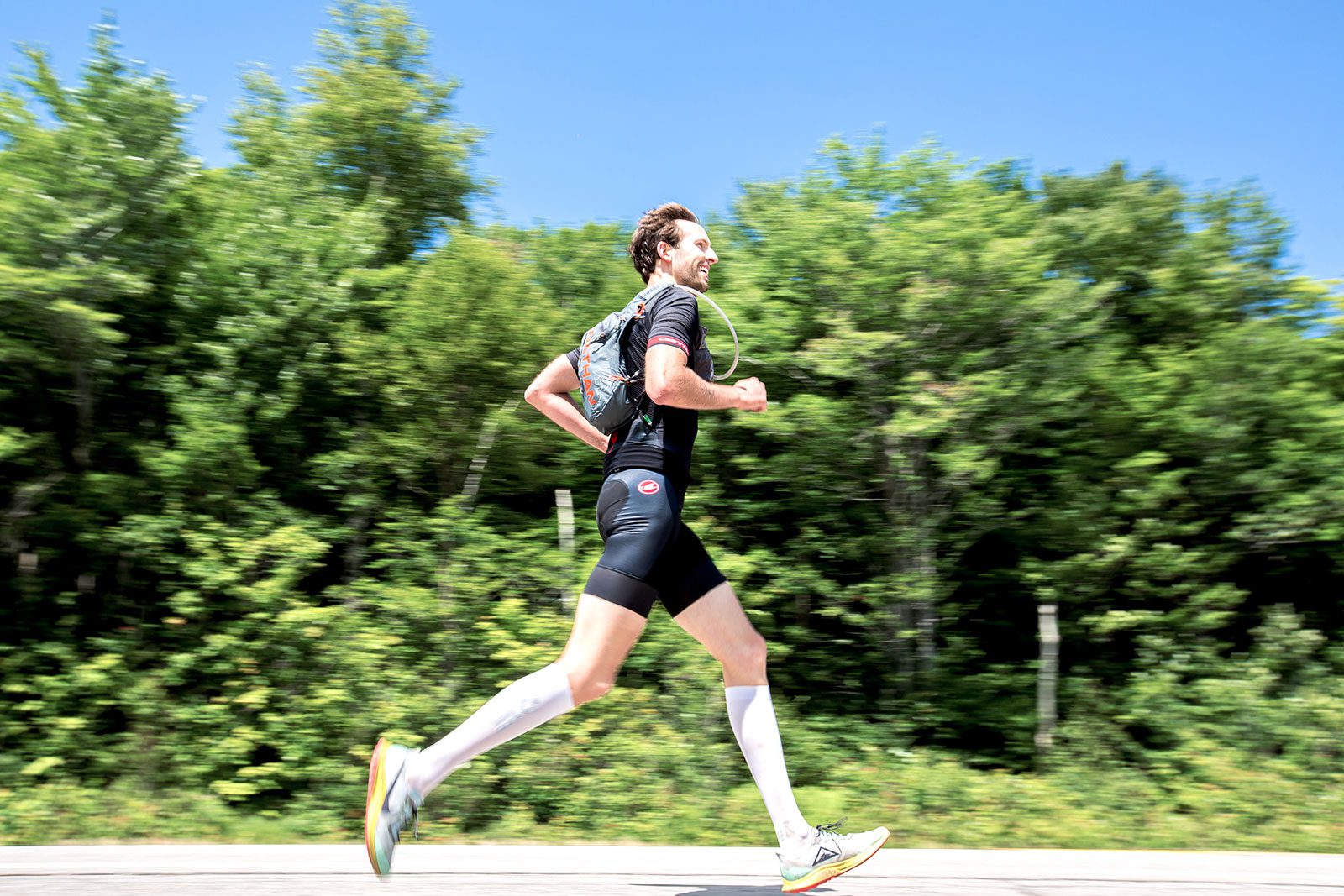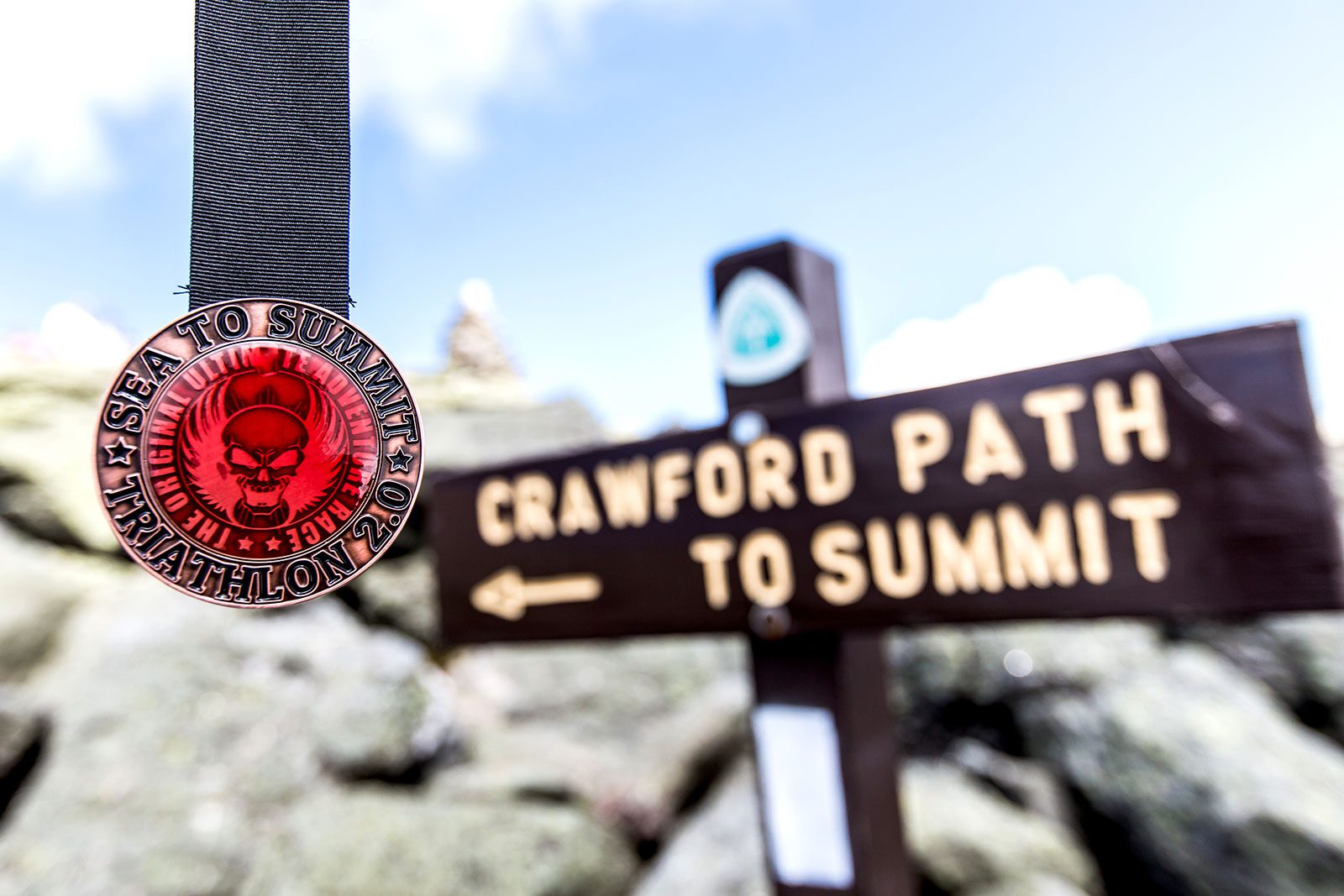The Sea to Summit Triathlon is a largely self-supported race consisting of:
- a 1.2 mile swim along the coast of the Atlantic Ocean in Maine
- a 95 mile bike ride (depending on course variations) from Maine into New Hampshire, following roads of your choosing, with 6000 feet of climbing
- a strenuous five mile run/climb up the tallest mountain in the Northeast: Mount Washington, with 4300 feet of vertical gain in altitude
How unique is Sea to Summit? At dawn, competitors are swimming at sea level. Seven to 12 hours later they are standing at the highest point in the Northeastern United States.
This is a deliberately small race, with a limited field of 125 experienced triathletes. Each competitor must designate a support person, or porter, who will be present at the start, drive the course (although not alongside the athlete), take away the bike at T2, and chauffeur the athlete down the mountain. For relay teams: as the race progresses one of the non-active team members assumes the role of porter.
The event will start at 4pm on Friday, the day before the race, with a mandatory packet pick-up for racers and their porters at the Spring Hill Recreation Center in South Berwick, Maine. Important instructions are given, along with last-minute news. The next morning is Race Day. As weather plays a critical role on race day (in the past, the swim has been cancelled due to thunderstorms, the bike has been adjusted due to road construction, and the run has been altered due to high winds or remaining snowpack) this meeting, while brief, is mandatory.
The Sea to Summit Triathlon was developed and refined over 25 years for those looking for a new and unique challenge. Race direction is headed by Andy Scherding and Kathleen Walker of New England Endurance Events.




